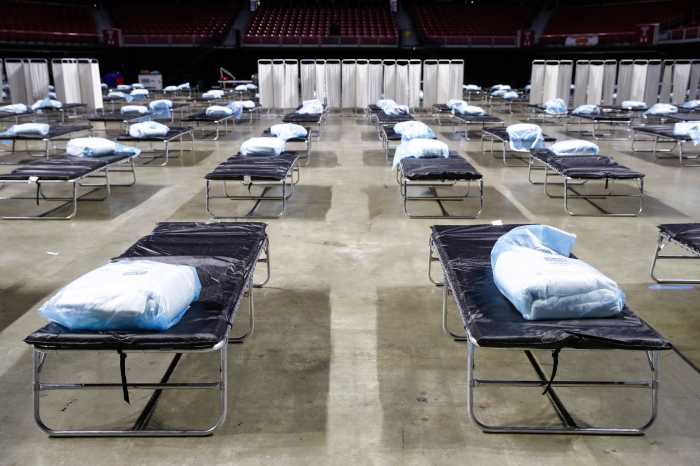By Michelle Price, David Lawder and Lawrence Delevingne
Some 51.1 million jobs were protected by a high-profile pandemic aid program, the Trump administration said on Monday as it revealed how a firehose of $521.4 billion in taxpayer cash washed across the landscape of America’s small businesses.
But the data underlined that in addition to mom-and-pop shops, the funds went to well-heeled and politically connected companies, some of which were approved for between $5 million and $10 million.
Those include several firms that lobby on public policy, such as Wiley Rein LLP and APCO Worldwide. There were, too, influential law firms like Kasowitz Benson Torres LLP, which has represented President Donald Trump, and Boies Schiller Flexner LLP.
Kasowitz Benson Torres said the funding, along with cost-saving measures, helped the law firm preserve hundreds of jobs at full salary at a time when federal courts and its offices were shut down.
Also in the mix: the Americans for Tax Reform Foundation, whose stated mission is to curb government spending, was approved for a loan of between $150,000 and $350,000.
The gallery of well-connected names extended deeply into the world of American privilege.
Sidwell Friends School, an exclusive private school which educated former President Barack Obama’s daughters, was approved for between $5 million and $10 million, as was Saint Ann’s School in Brooklyn, which – with tuition exceeding $50,000 per year – is attended by the children of hedge fund managers and celebrities.
Newsmax Media Inc., the media company run by Trump donor Christopher Ruddy, got the nod for between $2 million and $5 million.
Other than Kasowitz Benson Torres, the companies and schools did not immediately respond to a request for comment.
“While it’s a good start…more transparency is still needed to ensure that these taxpayer dollars went where Congress intended,” Chuck Schumer, the leading Senate Democrat said in a statement.
The colossal data set released by the U.S. Treasury Department and Small Business Administration (SBA), after initial resistance, gives Americans their first full look at who got cash from the first-come-first-served Paycheck Protection Program (PPP) that has been dogged by technology, paperwork and fairness issues.
To date, the SBA has released broad distribution figures for states, industries and the largest lenders. But the new data paints a much more detailed picture of which local communities and sub-sectors received support. Senior administration officials hailed the program as a “wild success,” with the data showing it supported about 84% of all small business employees.
The data includes information on 660,000 loans of $150,000 or more, including recipient name, address, lender, business type, jobs supported, and some demographic information. That accounts for roughly 73% of the dollars granted, but only 14% of the 4.9 million loans, according to a summary of data the agencies released on Monday.
While the data does not say exactly how much money each borrower received, they are placed in one of five bands: $150,000-350,000; $350,000-1 million; $1-2 million; $2-5 million; and $5-10 million. More than 4,800 loans were issued in the top band, while the overall average loan size was $107,000, the data shows. The Treasury released aggregate data on loans below $150,000 but did not name the borrowers.
Despite some eyebrow-raising recipients, the funds reached a wide swath of businesses – more than $67 billion for the healthcare and social assistance sector, $64 billion-plus for construction businesses, $54 billion for manufacturing and, at the smaller end, more than $7 billion for religious organizations, the data showed.
LINGERING QUESTIONS
Treasury Secretary Steven Mnuchin had initially refused to name any recipients, saying it could expose borrowers’ proprietary business information, particularly if they are sole proprietors and independent contractors. Under pressure from lawmakers, he agreed to shine a light on large borrowers.
Launched in April, the unprecedented program allows small businesses hurt by the pandemic to apply for a forgivable government-backed loan from a lender.
More than 5,000 U.S. lenders participated in the program, with JPMorgan – the country’s largest bank by assets – accounting for $29 billion in loans. JPMorgan, Bank of America, Truist Bank, PNC Bank and Wells Fargo originated 17% of total PPP loans, according to the data.
In the scramble to distribute funds, the program was beset by technology glitches, documentation snags and revelations that some lenders prioritized their most profitable clients, leading to some affluent companies receiving funds while less wealthy borrowers missed out.
Some investment firms, for example, were also on the list.
That included Advent Capital Management LLC, a New York-based debt investor with $9 billion in assets; Metacapital Management LP, a New York-based fixed income investor with more than $1 billion in assets; and Semper Capital Management LP, which invests nearly $4 billion in mortgage-backed securities.
Deepak Narula, the head of Metacapital, said his company decided it did not want the money and returned it “pretty quickly.” Spokespeople for Advent and Semper did not immediately respond to a request for comment.
Monday’s data is likely to raise further questions over whether the most needy benefited from the program and whether more companies should have returned the cash.
Roughly $30 billion worth of loans have already been returned or canceled, a senior administration official said. Those include loans taken by large or publicly listed companies which attracted fierce criticism for breaching the spirit of the rules, as well as duplicate loans issued to borrowers that applied with more than one lender or companies that decided they did not want or need the loan after all.
The data shows loans that have been approved by the SBA, but does not provide information on those which have been forgiven so far. Loans that appear to breach the letter or spirit of the rules may not be forgiven, and senior administration officials confirmed on Monday that they still intended to conduct a full review of loans of more than $2 million.
The Department of Justice has already brought charges against several PPP borrowers for fraudulently seeking loans, while the Securities and Exchange Commission has also begun scrutinizing companies whose public disclosures may have been inconsistent with the declaration of need borrowers were required to make when seeking the loans.
— Reuters





























